Alternative data has been revolutionizing the way finance professionals make investment decisions. But what is considered alternative data, and how is alternative data generated?
The term ‘alternative data’ refers to information that is not easily available in traditional financial reports, such as satellite imagery, social media sentiment, and even weather patterns.
In alternative data finance, professionals use this information to gain insights and make more informed investment decisions. In this blog, we will sneak into the world of alternative data, exploring its purpose, benefits, challenges, and the industries using it. From social media sentiment and weather patterns to satellite imagery, we will cover the diverse range of data sources that fall under the umbrella of alternative data.
Let us start by understanding what purpose alternative data serves.
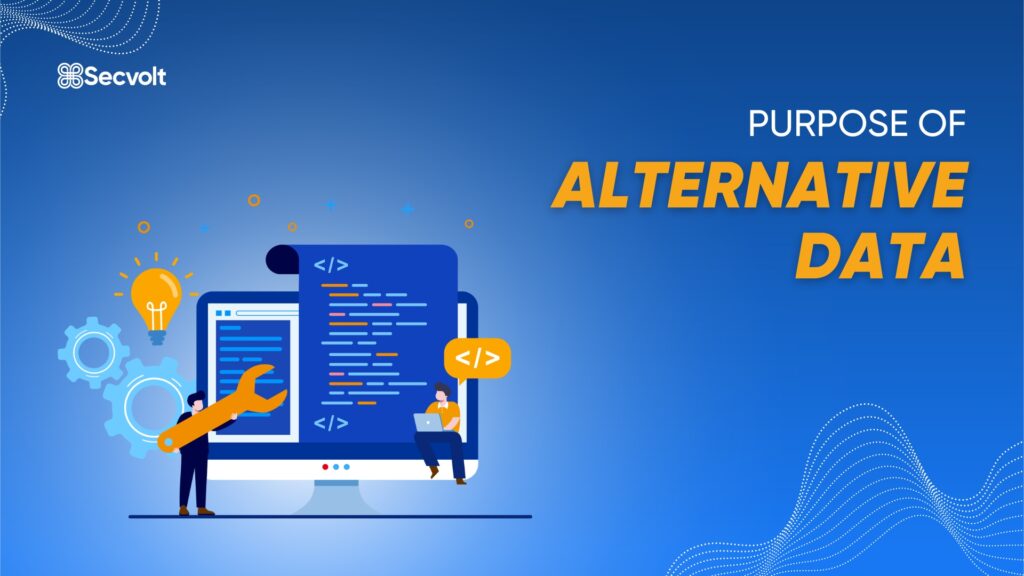
Purpose of Alternative Data
Traditional financial data sources, such as financial statements and economic indicators, can only provide a limited view of a company or industry. Alternative data, on the other hand, offers a more comprehensive and diverse range of information.
Alternative data examples include satellite imagery to track the activity and growth of retail stores, social media sentiment to provide insight into consumer sentiment, and weather patterns to affect the performance of some industries.
Availing of alternative data allows investors to identify patterns, trends, and potential risks that may not be visible through traditional financial data sources. It also detects the early signals of market or company performance changes, giving investors a competitive edge.
For example, satellite imagery can track the activity and growth of retail stores, social media sentiment can provide insight into consumer sentiment, and weather patterns can affect the performance of certain industries.
In short, the purpose of alternative data is to provide a more complete and accurate picture of a company or industry, allowing for better investment decisions.
Now, what are the tools required for alternative data? Let’s discuss this next.
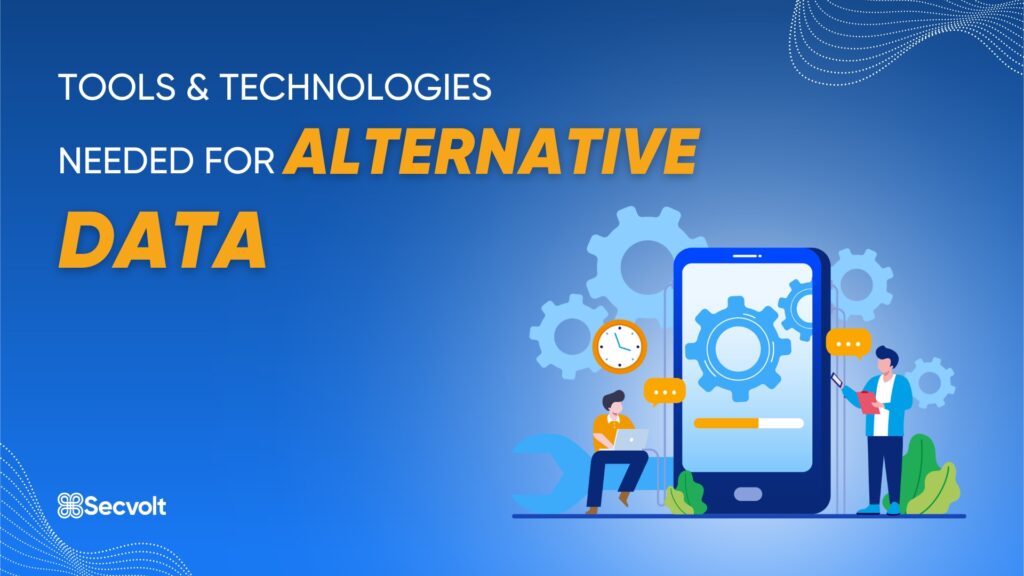
Tools & Technologies Needed for Alternative Data
To effectively analyze and use alternative data in finance, you need various tools and technologies. These include:
- Data Storage and Management Tools – These tools store and manage large quantities of alternative data. Examples include Hadoop and NoSQL databases.
- Data Visualization Tools – These tools present alternative data in a clear and easy-to-understand format. Examples include Tableau and Power BI.
- Natural Language Processing (NLP) Tools – These tools process and analyze unstructured data such as text data from social media or news articles. Examples include NLTK, spaCy, and Gensim.
- Data Analysis and Modeling Tools – These tools analyze and model alternative data to gain insights and make predictions. Examples include Python, R, and SQL.
- Machine Learning and AI Tools – These analyze and extract insights from alternative data. Examples include TensorFlow, Keras, and sci-kit-learn.
- Cloud Computing Platforms – These platforms store, process, and analyze large quantities of alternative data. Examples include AWS, Azure, and GCP.
These are the prerequisites required at every stage of the alternative data process.
Let us next look at the benefits of using alternative data.
If you need some ideas about what to read next, here they are:
- Dark Pools: How Hedge Funds Beat You Every Time?
- Concerns of Being A High-Net-Worth Individual
- How To Profit In An Economic Crisis?
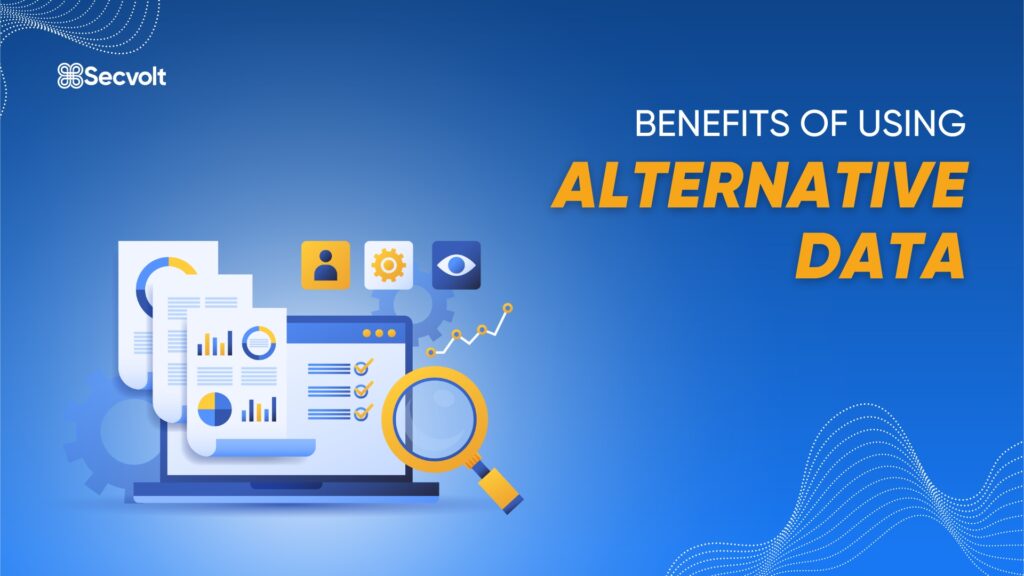
Benefits of Using Alternative Data
The benefits of using alternative data in finance are numerous such as:
- Increased Alpha Generation – Alternative data helps identify new investment opportunities and generate alpha, providing investors with an edge over those relying solely on traditional financial data sources.
- Uncovering Unseen Correlations – Alternative data enables investors in uncovering unseen correlations between different industries and sectors, which provides leverage to gain insights into the market and make investment decisions accordingly.
- Improved Decision-Making – Alternative data can provide a more complete and accurate picture of a company or industry, allowing for better investment decisions.
- Uncovering Niche Opportunities – Alternative data sources can reveal niche investment opportunities that may not be visible through traditional financial data sources.
- Enhancing Portfolio Diversification – Alternative data identifies new investment opportunities in different sectors or industries, allowing for greater portfolio diversification.
- Identifying Market Inefficiencies – Alternative data can help identify market inefficiencies that one can exploit for profit, for generating better returns.
- Improving Risk Management – Alternative data can provide a more accurate picture of a company or industry’s risk profile, allowing for better risk management decisions.
- Gaining a Competitive Edge – As more and more investors start to use alternative data, those who are not using it may be at a disadvantage. By incorporating alternative data into their investment process, firms can gain a competitive edge over their peers.
- Enhancing Algorithms – Alternative data can train and enhance investment algorithms, improving their accuracy and performance.
- Improving Forecasting Abilities – Alternative data can provide insights into future trends and market movements, allowing for more accurate forecasting.
- These are the benefits of using alternative data. Let us next see what are the challenges of using the same.
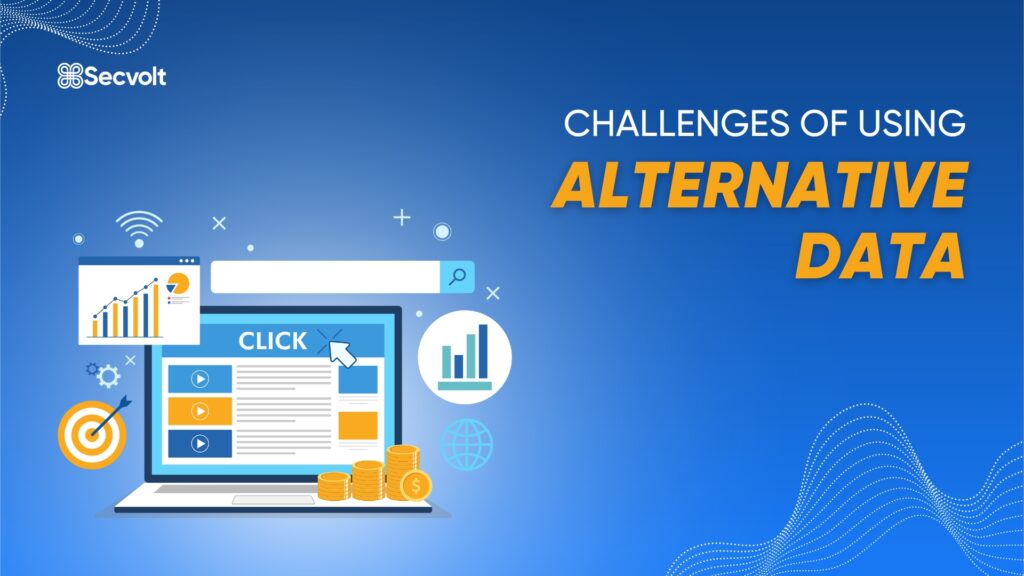
Challenges of Using Alternative Data
Using alternative data in finance comes with a set of challenges. The following are some challenges one faces while availing alternative data:
- Data Quality and Validity – One of the major challenges of using alternative data is ensuring that the data is of high quality and valid. Alternative data sources may not be regulated, which means that the data may not be accurate or reliable. For example, social media data may be biased or manipulated, satellite imagery data may be affected by weather conditions, and weather patterns data may be affected by climate change.
- Data Integration – Integrating alternative data into existing systems and processes can be challenging. Alternative data often comes in various formats and structures, making it difficult to integrate with traditional data sources.
- Governance – Ensuring that the data is collected, stored, and used in compliance with laws and regulations can be a challenge. As alternative data is not regulated, it can be challenging to ensure ethical and legal use.
- Data Security – Storing and protecting alternative data can be a challenge. Alternative data is often sensitive and confidential, and it is essential to ensure that it is stored and regulated securely.
- Management – Managing and maintaining alternative data can be a challenge. Alternative data is often generated in large quantities, making it difficult to store, process, and analyze effectively.
- Analysis – Analyzing alternative data can be a challenge, as it often requires specialized skills and knowledge. Alternative data is often unstructured, making it tough to analyze with traditional tools and techniques.
- Data Cleaning – Cleaning and preprocessing alternative data can be challenging as it often requires special techniques and tools to make it suitable for analysis.
- Data Privacy – Privacy concerns are also a challenge when using alternative data. It is vital to ensure that the data is collected, stored, and used in compliance with laws and regulations to protect the privacy of individuals.
- Expensive Process – Acquiring alternative data can be costly, and investors and firms need to weigh the cost of acquiring alternative data against the potential benefits it may provide.
- Quality Control – Ensuring the quality of the alternative data and maintaining consistency through the implementation can be challenging. Proper validation and quality control are crucial for accurate analysis and decision-making. Although these are some of the challenges of alternative data usage, it is still vastly used. If utilized in an efficient manner, alternative data can prove to be highly useful. Like in the next section, we will be looking at some companies & industries that are successfully using alternative data. Let us have a look.
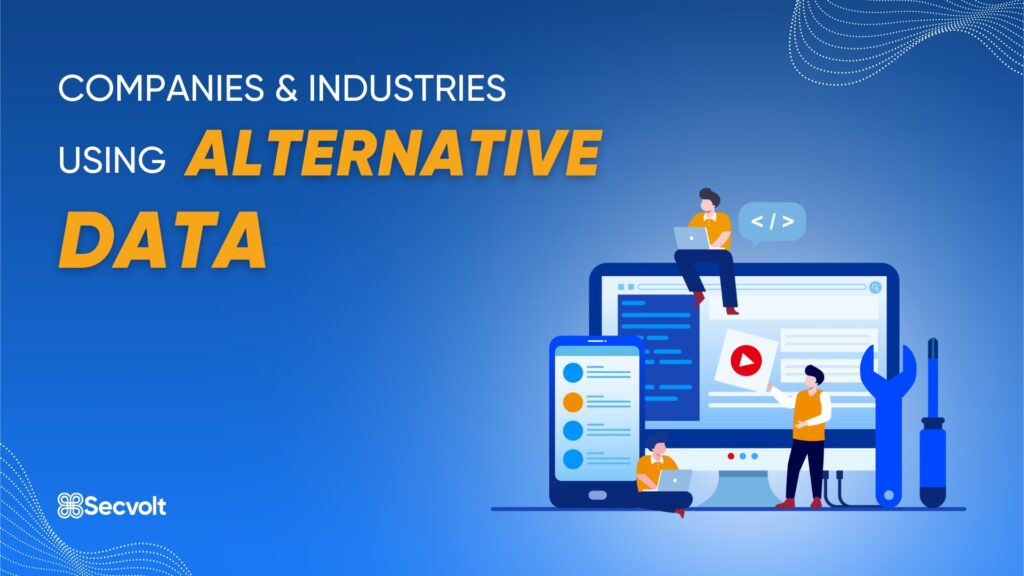
Companies & Industries Using Alternative Data
A growing number of companies and industries are successfully using alternative data in finance to gain insights and make investment decisions, improve supply chain management, track market trends, and improve product development. Alternative data examples include satellite imagery, weather patterns, social media sentiment, internet search data, patient data, and electronic health records. Some of the industries successfully using alternative data are:
- Hedge Funds and Asset Management Industry – Hedge funds and asset management firms are using alternative data to gain insights and form investment decisions. For example, satellite imagery tracks the activity and growth of retail stores, social media sentiment can provide insight into consumer sentiment, and weather patterns can affect the performance of certain industries.
- Retail Industry – Retail companies are using alternative data such as satellite imagery, weather patterns, and social media sentiment to gain insights into consumer behavior, track store performance, and improve supply chain management.
- Healthcare Industry – Healthcare companies are using alternative data such as patient data and electronic health records to improve drug development and patient outcomes.
- Technology Industry – Technology companies are using alternative data such as internet search data, and web traffic to gain insights into consumer behavior, track market trends, and improve product development.
- Banking and Finance Industry – Banks and financial institutions are using alternative data such as social media sentiment and news articles to track market trends and gain insights into consumer behavior.
We have seen how alternative data is used in these different industries. Now, what does the future look like for these? The future prospects and potential of alternative data use in various industries and sectors are vast. Experts believe that alternative data will play an increasingly important role in a variety of industries including finance, retail, hedge funds, healthcare, asset management, and technology. Alternative data examples such as satellite imagery, social media sentiment, and weather patterns are expected to provide a more comprehensive and diverse range of information to identify patterns, trends, and potential risks, making better investment & management decisions and improving performance in these industries. So, we have discussed the purpose of alternative data, the tools required in the process, the benefits & challenges of using the same, industries using alternative data, and the future prospects of the same. In the final section, let us look at a hedge fund that has broken all the records by using a combination of best alternative practices.

The Bottom Line
In summary, understanding the purpose, benefits, challenges, and future prospects of alternative data use are crucial for companies and investors who want to stay ahead of the competition. Alternative data in finance would play an increasingly important role in investment decision-making, providing investors with a more comprehensive and diverse range of information, allowing them to identify patterns, trends, and potential risks. Hedge funds like Secvolt are already taking advantage of alternative data in finance to gain an edge in the market and generate results as exceptional as 262%, that too in a year like 2022. As the use of alternative data continues to grow, it will become increasingly important for companies and investors to understand how to effectively use this data to gain insights and produce better results.
Join Our Newsletter
Elevate your financial game & join the ranks of elite investors with Secvolt’s exclusive newsletter.
Join Our Newsletter
Elevate your financial game & join the ranks of elite investors with Secvolt’s exclusive newsletter.
Don’t just dream of wealth; achieve it with Secvolt. Schedule a call today for personalized guidance on your investment strategy and join the ultra-successful.
Ready to unlock your wealth’s truest potential & cherish affluence?
Secvolt, our hedge fund, sets the bar high with a record-breaking performance of 262% returns in 2022. With the brilliance of our highly advanced quant models and the efficiency of our risk mitigation protocols, we are yet to see a loss!
We’re the perfect ally to help you succeed financially and build the lasting legacy you have always aspired for.
Get in touch today. YOUR LEGACY AWAITS YOU…






